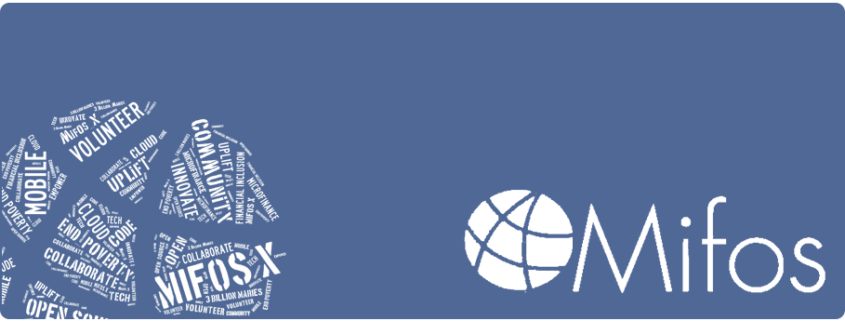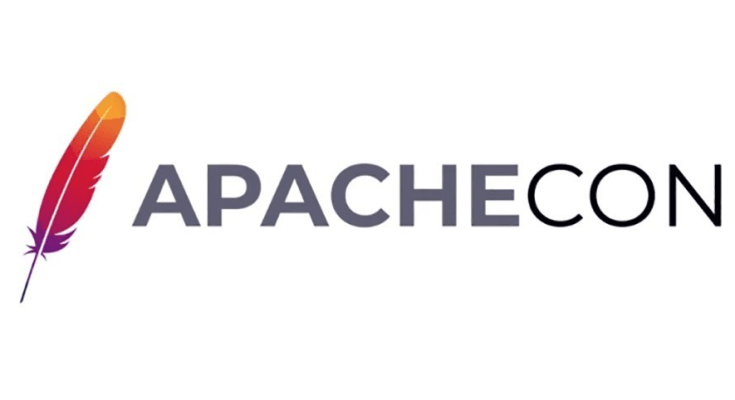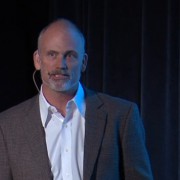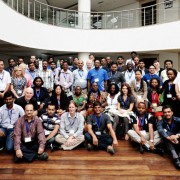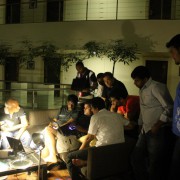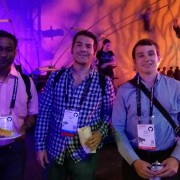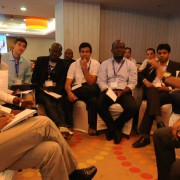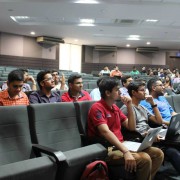Scaling the Community to New Heights at ApacheCon
ApacheCon North America 2022 kicks off this upcoming week in New Orleans from October 3 to October 6. I’m looking forward to the first in-person gathering for Apache post-Covid and our first in-person Fineract/Fintech track. Many thanks again to Javier Borkenztain from Fiter for spearheading the track. Once again Mifos Initiative has played a key role in coordinating a number of speakers to be a part of the track. While unforeseen issues and delays with getting visas derailed the speaking opportunities for many of our international participants, we still have a diverse group of speakers that will provide a valuable means for the current ecosystem to come together as well as attract new members to our global movement to commoditize banking software.
The over-arching theme across many of the talks Mifos helped to arrange for the Fintech track centers around building and scaling the momentum that is growing around the project over the course of the past year. The continually growing rate of organic adoption across the public and private sector this past year demonstrates Mifos and Fineract as critical building blocks, digital public goods, and open source primitives for catalyzing financial services innovation. This increased adoption in turn has yielded greater upstream contribution resulting in more frequent releases, improved automation, greater stability and scalability across the platform.
At all layers of our projects from the core Fineract banking platform itself on down to our web and mobile apps, payment hub for payment orchestration, and OpenG2P for digitization of social protection programs, momentum is building. Our sessions will help continue and further catalyze that momentum with talks looking at the following:
- Mifos and Fineract as foundational and fundamental building blocks that accelerates innovation across the private and public sector whether as Open Source Primitives for banking, fintech and financial inclusion or Digital public goods and Building Blocks for the public sector for initiative like GovStack or OpenG2P
- Increasing the Scalability of Fineract to support fintechs operating at planet scale, the new wave of niche-focused neo-banks as well traditional retail financial institutions of all sizes looking to digitize and provide modern fintech solutions to their customers.
- Helping private and public sector institutions alike balance the needs of their solutions around stability, secrecy, and time to market with the community needs of transparency, agility, and maintainability for the project through a closer look at the mindset, processes, and policies across the community, organization and individuals to fuel upstream contribution and unlock a virtuous cycle.
- With this growth in upstream contribution, plotting out a Roadmap for Mifos and Fineract that establishes the horizon of where we should aim in the future, greater foresight of what’s coming in the near future, and clear signalling to the ecosystem around the boundaries of what and where to contribute.
- How Fineract can be at the cusp of bleeding edge technologies like CBDC issuance from governments, real-time payment adoption, and more.
A huge thank you to Rich Bowen and all the volunteers for coordinating an inclusive and engaging event that’s in-person once again!
Abstracts of each session can be found below. I look forward to seeing those who will be in person in New Orleans next week!
Through our close connections to various individuals throughout the Mifos and Fineract ecosystem, we have been helping to facilitate a number of presentations and panels on the Fineract Track:
Living and Breathing the Apache Way. Contributing upstream with competitors, customers, and investors breathing down your neck
Monday, October 03 11:20 AM CDT
Aleksandar Vidakovic
We all know that Fineract as a mission-critical core banking system provides a difficult balance to strike when rapidly building a differentiated product on top of an open source project. While challenging to balance the need for secrecy and time to market for one’s solution versus the transparency and contribution to the open source project, when upstream contribution is done right it unlocks enormous economic value for not just you the innovator but the entire ecosystem as a whole.
This session will explore at a practical level the culture, processes, and standards that need to be in place at both an org level and a community level to ensure that individuals can effectively contribute to upstream open source codebase while efficiently maintaining their downstream solution. We know that putting into practice the Apache Way can be difficult and will share our firsthand experiences so others in the community can do the same and reap the economic benefits both internally as well as externally across the entire community.
Performing Due Diligence as Android Developers
Monday, October 03 2:20 PM CDT 40 min
Ishan Khanna
In this session, I plan to share my learnings from the process of integrating Third-Party SDKs. Having successfully delivered such projects at Tinder and Booking.com, I came up with a Due Diligence framework for Android developers that a lot of teams can benefit from, especially at Open Source Projects, Startups, Scaleups, and Small companies that often ignore the hidden costs and pitfalls of integrating third-party libraries and SDKs.
The attendees will walk away with a Framework that can be implemented at any company in time and can establish and improve an existing framework in these companies for evaluating and integrating with Third-Party Libraries and SDKs.
Central Bank Digital Currencies, Stablecoins, and the role of open source and fineract
Monday, October 03 3:10 PM CDT 40 min
James Dailey
Central Bank Digital Currencies (CBDCs) continue to evolve as a concept, with the US Federal Reserve, Sweden’s Riksbank, and the Kenyan Central Bank all requesting policy makers and vendors to provide additional information about ways to improve financial inclusion and digital currencies with new technologies and standards. While advocates of so called “Stablecoins” claim proper currency controls, the Central Banks and regulators are not as confident. CBDCs are a way for Central Banks to provide a government backed digital currency, and a counter to the private currency providers. Fineract, as a centralized ledger system, could be configured and used in tandem with one or more protocol providers (e.g., XRP) to establish a gateway between the formal sector banking (legacy systems) and new stablecoins or CBDCs. This discussion will focus on how the project should navigate the waters between CBDCs, Stablecoins, and various global efforts.
Scaling and Modularizing Fineract 1.x – Keeping Pace with the Evolution of Fintech and Embedded Finance.
Monday, October 03 4:10 PM CDT 40 min
Istvan Molnar
Composability and Scalability in the cloud is all the rage these days when looking at fintech & core banking infrastructure. The Fineract community has explored and traveled down several paths of evolution and is now deeply focused on refining Fineract 1.x to meet the scalability and modularity requirements of the world’s leading fintechs and financial institutions.
Our panelists will explore and walk through a number of the ongoing changes that are being implemented into the upstream Fineract codebase that will allow it continue to stay at the forefront of core banking, fintech infrastructure, and embedded finance.
You’ll discover the major enhancements at the database, API, event handling, and batch processing layer that are being introduced to evolve Fineract to scale to support tens of millions of accounts and the transaction processing required by digitally native organizations.
We’ll walk through the ongoing roadmap to enable greater modularity and composability to ease downstream contribution and equip institutions to innovate in a rapid, agile, low-code manner. At an infrastructure level, we’ve also vastly improved release management, testing coverage, automated code quality checks and more to make contribution and downstream release management seamless. Lastly we invite you to participate in this roadmap for scalability by giving your architectural input, contributing upstream, and picking up tasks in the backlog.
An Open Core: Open Source Primitives for Managing Accounts
Monday, October 03 5:00 PM CDT 40 min
Ed Cable
This session explores how core banking systems can be broken down into open source building blocks – i.e. primitives for accounts – customers, deposit accounts, credit accounts. At an architectural level we will explore the foundational building blocks for managing customer and financial accounts.
They will benefit from learning about the architecture, a hands-on view of the APIs, understanding the lower total cost of ownership and time to market by building from open source primitives, and the economic value of an upstream first approach to development enabling a virtuous cycle to collectively maintain an open source core banking platform.
Angela Strange, in her keynote at the inaugural Fintech DevCon powerfully articulated open source financial primitives as transformative building blocks to unlock new financial services innovation. To disrupt the fintech sector, core banking software must be commoditized and that can only be done by breaking the core into a set of primitives for managing accounts.
We will explore at an architectural and practical level what these foundational components are for managing customer accounts, deposit/savings accounts, and credit/loan accounts. We will define the architecture and APIs underlying these primitives and through illustrative case studies of Fineract users show how fintechs from around the world layer additional innovation on our open source APIs and building blocks to quickly get to market with solutions at a much lower cost.
Functional Roadmap for Fineract – Honing in on a Limitless Horizon
Tuesday, October 04 11:20 AM CDT 40 min
Bharath Gowda
Across the world, Fineract is the clear market leader in open source for financial services as the breadth of functionality in the core banking platform equips hundreds of institutions of all sizes, regulatory forms, and market focuses with the underlying core functionality. Despite this broad footprint of use cases supported, the horizon for new functionality is endless.
This session led by one of the foremost functional Fineract experts will explore a number of topics:
- What Next? Within loan management, there is overwhelming demand in many additional verticals – line of credit, factoring, supply chain financing, leasing, etc. Across other verticals, the topics are boundless: better support for payments, wallets, savings-led financial inclusion. We can also deepen retail core banking features – treasury management, fixed asset management. On complementary systems, we can extend further to decisioning, origination, KYC/identity, FARM, compliance, & more.
- How do we Focus? A widespread global community presents a challenge & opportunity to gather, consolidate & prioritize feedback & requirements.
- Who publishes a roadmap? Mifos aims to convene companies around a collective vision/roadmap that gets implemented by individuals contributing via Apache Way.
- How do we Execute? This roadmap then must get translated into upstream contribution. – Who do we benchmark against? Modern composable platforms like Mambu or Thought Machine? Legacy players like Temenos or Flexcube?
Modernizing the Legacy Core: Fineract Driving Disruption and Displacement across the Retail Banking Sector
Tuesday, October 04 12:10 PM CDT 40 min
Art Muthiora
Across the Fineract ecosystem itaEUR(tm)s readily evident that legacy core banking systems at the heart of the retail financial services sector are too costly, too closed, and too disconnected to enable the widespread reach needed to serve the 3B underbanked. With its roots in microfinance, in the past institutions would graduate from Fineract onto a more traditional legacy core system; we’re now witnessing the opposite as Fineract is displacing legacy core banking systems across multiple markets because of its lower total cost of ownership, modern architecture, greater agility & higher degree of flexibility & connectivity into digital payments & channels. Leading system integrators from across multiple regions will present their firsthand experiences migrating fintechs & financial institutions onto Fineract from legacy systems. The journey is ongoing as Fineract still has additional functional capabilities to be added to be at greater parity with these incumbents.
The session will also practically explore the range of features to be contributed and collaborated on including multi-tiered KYC, treasury management, IFRS accounting standards, limit management, seamless omnichannel integration, multi-currency, and ATM/POS/Card integration.
Participants will learn what is driving this shift, the growing opportunity it presents, the challenges in displacing legacy systems, and how to advance the Fineract roadmap to accelerate the shift even further with more adoption by retail banks.
Realtime Payments in Mexico using Apache Fineract
Tuesday, October 04 3:10 PM CDT 40 min
Jose Alberto Hernández
We will show how easy it is to implement Apache Fineract with CoDi using a popular Messaging Platform for merchants or B2C use cases. Real Time payments everywhere allows for an easier adoption of electronic banking and a faster financial inclusion, in Mexico the Central Bank has created a mobile Electronic Banking platform that implements Digital Payments flows using QR codes and Push messages: It is CoDi. We want to highlight that using an Open Source financial technology framework like Apache Fineract allows banking and fintech institutions to create a bigger ecosystem that facilitates the financial services delivery in a secure, fast and efficient way. The economy has an initial positive impact on the merchants because transactions will be carried out in a matter of seconds (real time); without schedule restrictions, 24 hours a day, 7 days a week or any cost fee over the transaction amount of the sale. Together (Apache Fineract and CoDi) boosts the economy because they streamline the disposition of resources immediately, just like cash transactions but safer and faster. Using Apache Fineract for the implementation of this functionality improves the security of the population, avoiding the risks of transferring values and managing cash operations. Also allows to reduce poverty because the Social Program beneficiaries can use their resources using common and well known platforms, reducing the learning curve or going to physical branches.
Injecting the Apache Way to to Help Sustain and Scale the Digital Public Goods Movement
Tuesday, October 04 5:00 PM CDT 40 min
James Dailey
Jake Watson
Digital Public Goods (DPGs) are open source projects that are important for serving the needs of countries and communities globally, especially aimed at such things as health service delivery, identity systems, and financial services. These include Fineract, Mifos, OpenG2P, Mojaloop, and MOSIP. Digital Public Infrastructure are those same DPGs applied in the context of countries and regional efforts with the necessary implementation focus. This past year momentum in DPG/DPIs and building blocks has built up immensely as governments and multi-laterals recognize the need for long-term sustainability and investment into the maintenance of these technologies and the health of their open source communities. This talk will discuss the important evolution of DPGs and DPIs and how the Apache Way, with its focus on community and upstream development ethos, can play a critical role in transforming the procurement, governance, and contribution to DPGs/DPIs to advance their long term sustainability.
OpenG2P – Unifying Multiple Digital Public Goods to create an end to end platform for digitizing social protection programs
Wednesday, October 05 2:20 PM CDT 40 min
Ed Cable
Throughout the two previous ApacheCon gatherings weaEUR(tm)ve highlighted the growth and evolution of OpenG2P as end to end system digitize bulk cash transfers and social protection programs from beneficiary management to payment disbursement to grievance and redress mechanisms. The OpenG2P architecture continues to evolve as a showcase of how multiple Digital Public Goods can be unified under a common framework to deliver an end to end solution for a complex use case challenging governments. This session will focus on the current and ongoing integration of two DPGs into OpenG2P – Apache Fineract and Mifos Payment Hub for payment orchestration and MOSIP for digital identity and biometric authentication and authorization.
Through this exploration of the solution architecture and the ongoing reference implementations in two separate regions, we’ll highlight the complementary nature of the current Digital Public Goods being intertwined as well as explore the roadmap and potential of incorporating other DPGs like Mojaloop, X-Road, and OpenCRVS. From this session, we will present the governance and collaboration structure for other open source contributors to get involved as well as in-depth look at the architecture, use cases, and roadmap for social protection that showcases the complementary nature of these various systems, demonstrates the boundaries of their APIs and pinpoints the logical points of integration, and directly invites other contributors to become involved.

